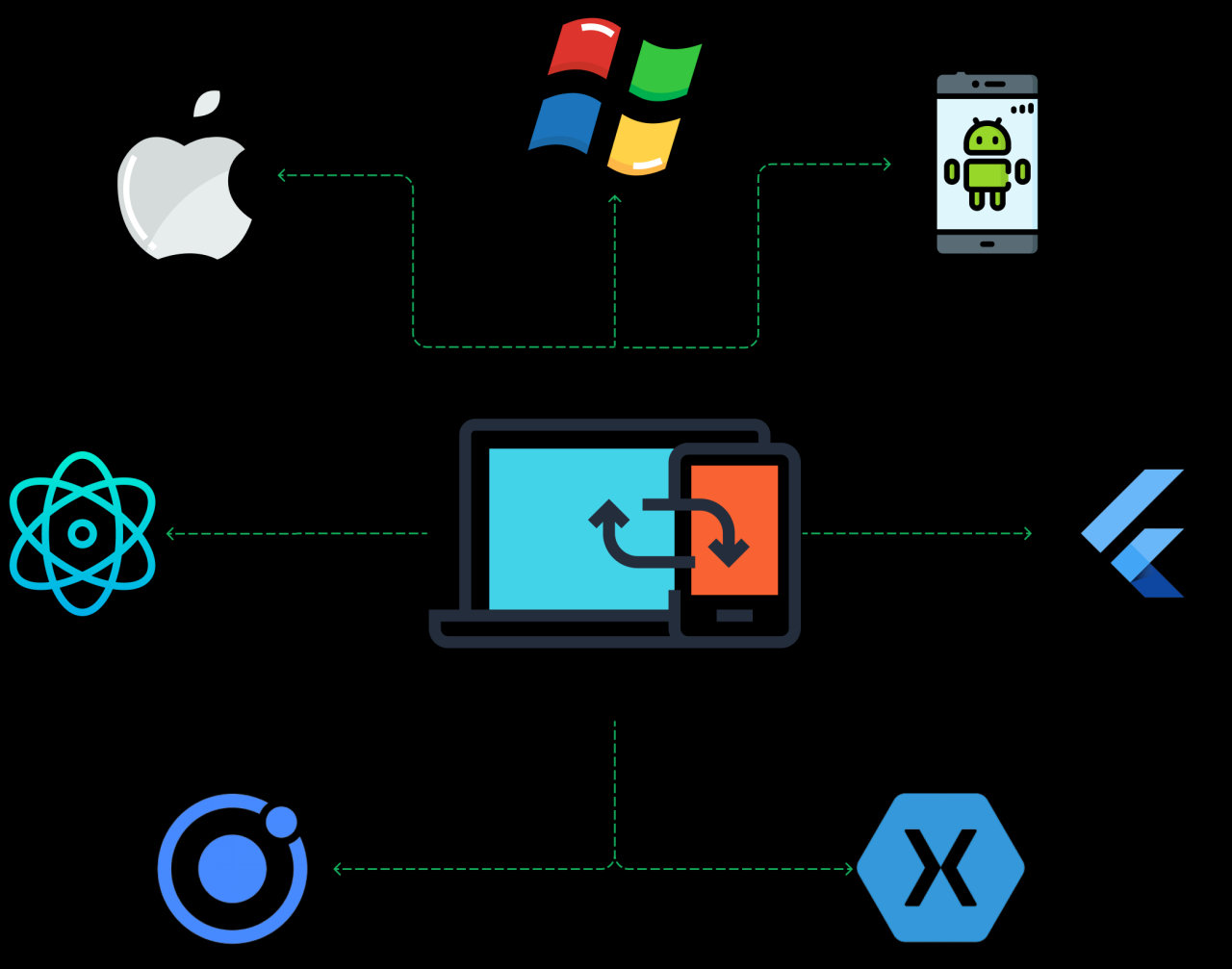Multi-platform software solutions are revolutionizing the way we interact with technology, offering unprecedented reach and accessibility. This guide delves into the multifaceted world of developing applications that seamlessly integrate across diverse operating systems and devices. We will explore various development approaches, design considerations, and crucial technical aspects, ultimately providing a robust understanding of this increasingly vital field.
From defining the core concepts of multi-platform software and outlining its advantages and disadvantages, we’ll journey through the complexities of development lifecycles, UI/UX design principles, and crucial security considerations. We’ll also examine practical strategies for cost and time management, and offer insights into successful case studies, highlighting best practices and future trends shaping this dynamic landscape.
Development Approaches for Multi-Platform Software: Multi-platform Software Solutions

Developing software for multiple platforms presents unique challenges and opportunities. The choice of development approach significantly impacts factors such as development time, cost, performance, and user experience. Understanding the strengths and weaknesses of each approach is crucial for making informed decisions.
Choosing the right approach depends heavily on project requirements, budget, and team expertise. There is no single “best” approach; the optimal solution varies considerably depending on the specific context. This section will explore three common approaches: native, hybrid, and cross-platform development.
Native Development
Native development involves creating separate applications for each target platform (e.g., iOS, Android, Windows) using platform-specific programming languages and tools. For example, iOS apps are typically developed using Swift or Objective-C, while Android apps use Kotlin or Java. This approach delivers optimal performance and access to all platform-specific features. However, it also necessitates maintaining multiple codebases, increasing development time and cost. The resulting applications generally offer the best user experience due to their seamless integration with the platform’s design guidelines and capabilities.
Hybrid Development
Hybrid development utilizes web technologies (HTML, CSS, JavaScript) within a native container. Frameworks like React Native, Ionic, and Xamarin allow developers to write a single codebase that can be deployed across multiple platforms. This approach reduces development time and cost compared to native development. However, performance might be slightly lower than native apps, and access to platform-specific features can be limited. While hybrid apps aim for a consistent experience, they might not fully capture the native look and feel of each platform.
Cross-Platform Development, Multi-platform software solutions
Cross-platform development, similar to hybrid development, aims to create applications that run on multiple platforms from a single codebase. However, it typically uses different technologies. Frameworks like Flutter (using Dart) and Xamarin (using C#) compile the code into native components, often leading to better performance than purely hybrid approaches. While cross-platform solutions offer a good balance between development speed and performance, they may still face limitations in accessing certain platform-specific features. Furthermore, achieving a truly consistent and native-feeling user experience can be challenging.
Development Lifecycle Flowchart
The following describes a flowchart illustrating the development lifecycle for a multi-platform application. The flowchart would begin with Requirements Gathering, followed by Design (including UI/UX design specific to each platform), Development (coding for each platform or using a cross-platform framework), Testing (thorough testing on each target platform), Deployment (releasing the application on app stores or other distribution channels), and finally, Maintenance (ongoing updates and bug fixes). Each stage would involve feedback loops to ensure quality and user satisfaction. The branching in the flowchart would reflect the choices made regarding the development approach (native, hybrid, or cross-platform) and the iterative nature of the development process. Visual representation of this process, though not included here, would be crucial to visualizing the flow.
Best Practices for Consistent User Experience
Ensuring a consistent user experience across different platforms requires careful planning and execution. This includes adhering to each platform’s design guidelines (e.g., Material Design for Android, Human Interface Guidelines for iOS), utilizing consistent branding and visual elements, and employing platform-appropriate input methods and interactions. Regular user testing across different devices and operating systems is crucial to identify and address inconsistencies. A well-defined style guide, containing specifications for UI elements, typography, color palettes, and interactions, can help maintain consistency across platforms. Furthermore, utilizing a single design system can facilitate a more unified user experience, especially if employing a cross-platform or hybrid approach.
Developing successful multi-platform software requires a holistic approach, encompassing technical expertise, thoughtful design, and meticulous planning. By understanding the diverse development approaches, addressing potential challenges proactively, and prioritizing user experience, developers can create applications that not only reach a wider audience but also provide seamless and engaging interactions. The future of multi-platform software is bright, driven by innovation in cross-platform frameworks and the integration of emerging technologies. This guide serves as a foundation for navigating this exciting and ever-evolving field.
Developing robust multi-platform software solutions requires careful consideration of various factors, including fairness and ethical implications. A crucial aspect of this is mitigating bias, and a helpful resource in this area is the comprehensive guide on Tools for AI bias detection , which offers insights into identifying and addressing potential biases within algorithms. Ultimately, incorporating such bias detection tools improves the overall quality and trustworthiness of multi-platform software applications.
Multi-platform software solutions offer significant advantages for businesses seeking broad reach. The choice between developing such solutions often hinges on a key decision: opting for a tailored system or utilizing existing off-the-shelf options. Understanding the trade-offs is crucial, and a helpful resource for this is the article on Custom vs off-the-shelf software. Ultimately, the best approach for multi-platform software depends on specific needs and budget considerations.
